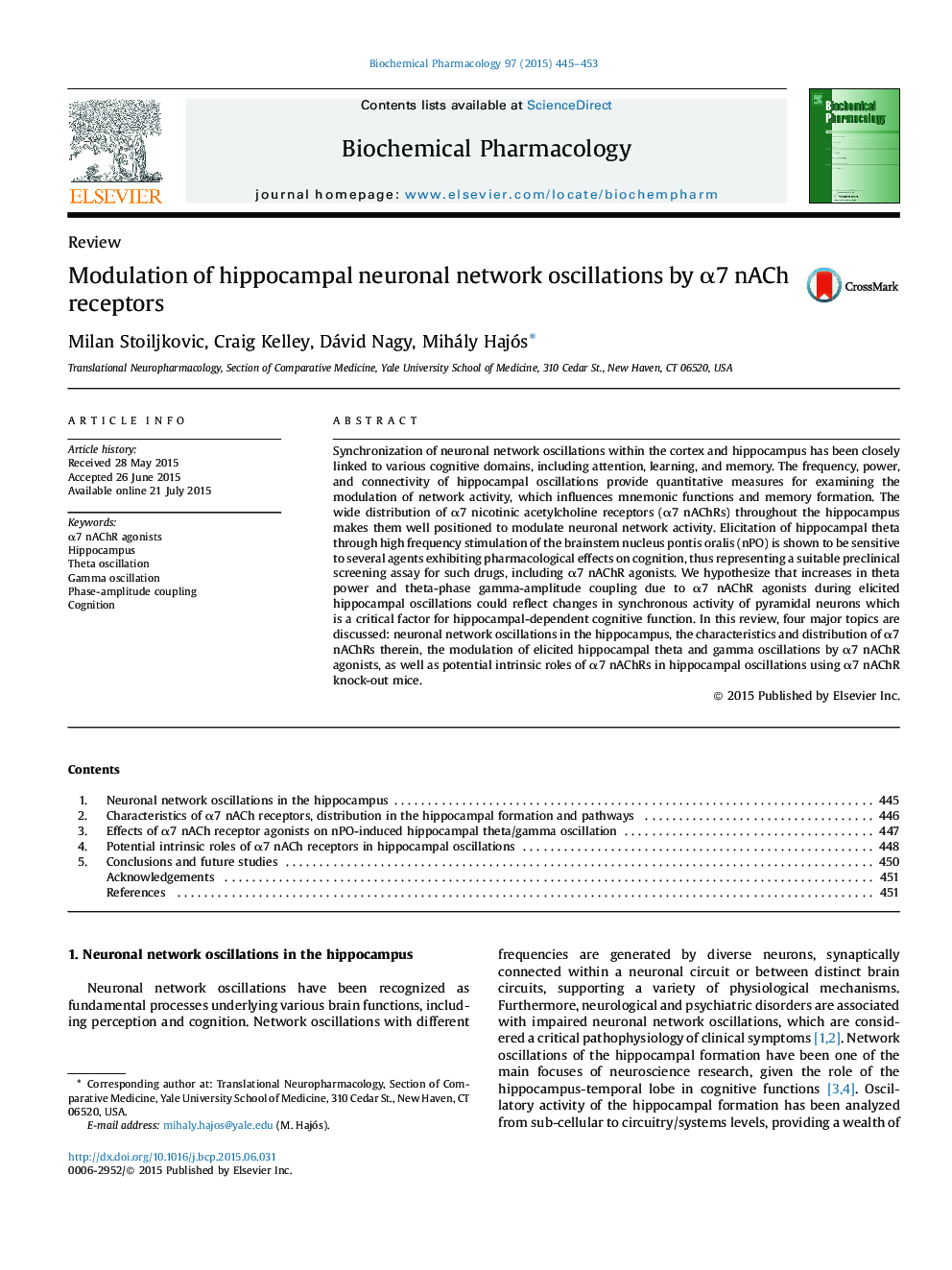| Article ID | Journal | Published Year | Pages | File Type |
|---|---|---|---|---|
| 2511997 | Biochemical Pharmacology | 2015 | 9 Pages |
Synchronization of neuronal network oscillations within the cortex and hippocampus has been closely linked to various cognitive domains, including attention, learning, and memory. The frequency, power, and connectivity of hippocampal oscillations provide quantitative measures for examining the modulation of network activity, which influences mnemonic functions and memory formation. The wide distribution of α7 nicotinic acetylcholine receptors (α7 nAChRs) throughout the hippocampus makes them well positioned to modulate neuronal network activity. Elicitation of hippocampal theta through high frequency stimulation of the brainstem nucleus pontis oralis (nPO) is shown to be sensitive to several agents exhibiting pharmacological effects on cognition, thus representing a suitable preclinical screening assay for such drugs, including α7 nAChR agonists. We hypothesize that increases in theta power and theta-phase gamma-amplitude coupling due to α7 nAChR agonists during elicited hippocampal oscillations could reflect changes in synchronous activity of pyramidal neurons which is a critical factor for hippocampal-dependent cognitive function. In this review, four major topics are discussed: neuronal network oscillations in the hippocampus, the characteristics and distribution of α7 nAChRs therein, the modulation of elicited hippocampal theta and gamma oscillations by α7 nAChR agonists, as well as potential intrinsic roles of α7 nAChRs in hippocampal oscillations using α7 nAChR knock-out mice.
Graphical abstractFigure optionsDownload full-size imageDownload as PowerPoint slide
